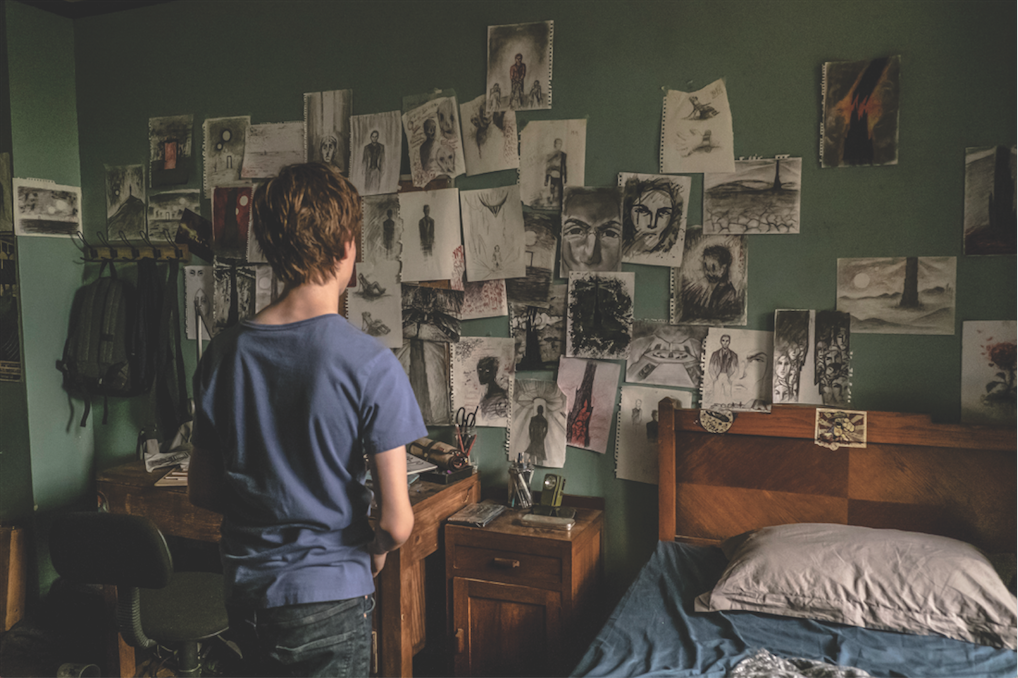Few writers have achieved the commercial success of Stephen King. Since his first novel was published in 1974, he has released, on average, over a book a year with most becoming bestsellers. King’s work has an impressive list of film and television adaptations as well, running the gamut in quality from laughably awful to brilliant. Some, like Stanley Kubrick’s The Shining are fantastic films, but poor adaptations of the original material. In 2017 alone there are four movies, two television series and several short films either already or soon to be released that are based on King’s stories.
The first of these adaptations, The Dark Tower, is an attempt to bring King’s self-professed magnum opus to the silver screen. In the seven books that form the original story, King mixes genre with heedless ferocity and they are, at times, beautiful, grotesque, tense, funny, and occasionally disturbingly sexual. The series is about the journey of Roland Deschain, a gunslinger from a land called Mid-World, who must reach the titular Dark Tower to save the universe from unraveling. On his journey, which takes well over a million words, he meets many people, killing most of them, but there are a precious few who travel with him at different times that are vital keys to his journey’s success.
Deschain is the heart of the story of The Dark Tower and is one of the most tragic characters in King’s pantheon. He lives in the grayest of moral spectrums with his dedication to reaching the Tower taking priority over everything else. King’s tendency to tell stories through the mental voices of his characters is very evident in his exploration of Roland and that puts any film adaptation at a big disadvantage. In addition, his journey to the tower costs him everything and the brutal lengths he goes to in search of his goal make him a difficult character to portray with any sympathy.
This year’s film of The Dark Tower chose to sidestep the question of how to convey Roland’s desperate journey and its high costs by switching focus to Jake, one of Roland’s young companions. Jake is a teenage boy from a world very much like ours, who dreams of a Dark Tower that is threatened by a mad Man in Black and a gunslinger who would stop him. Jake finds a way to the land of the gunslinger, Roland, who has given up his quest in despair. Jake convinces Roland to let him come along and the two form a friendship, but eventually the Man in Black captures Jake, and Roland is forced to either let Jake die or return to his honorable path.
There are far too many differences between the original story and the film to list, and those differences do not guarantee a bad film or adaptation, but there are two choices that can be pointed to as the film’s downfall. In the film, Roland’s character has abandoned his search for the tower which changes the arc of his story. His willingness to sacrifice everything at the altar of destiny is what guides the tone of the book. To take that away is to remove the impetus for the characters, and the film never presents a substitute which leaves it feeling pointless and meandering. Things happen and people have emotions, but no compelling reasons are given for those actions or feelings.
The other detrimental choice was aiming for a PG-13 rating. The limitations of a PG-13 film require that most of the graphic subject matter be removed, and there isn’t much left of The Dark Tower if that is taken away. The film chose to appeal to the lowest common denominator by its refusal to commit to any of the more difficult story lines. While Roland does shoot hundreds of people in the film, every one of them is a faceless baddie who dies without a splash of blood. Both choices gut the original material, and for someone familiar with the inspiration behind it, it makes for a terribly boring experience.
The second of 2017’s film adaptations is It, the story of seven outcast children who dub themselves The Losers Club. They discover that their small Maine town of Derry is home to a murderous entity that appears every 27 years to kill and eat as many children as possible, and that they are the only ones who can stop it. The book weaves the history of the town, the story of The Losers club as preteens, and their lives as adults 27 years later into one massive tale of heroism, death, and childhood trauma. The narrative of It is driven by the relationships between the children and the revelations of just what the evil is that lurks in the sewers and how it can be defeated. Each of the Losers contributes a strength to the group, and it is only through their dedication and love of each other that they can succeed at besting It.
This fall’s adaptation of It is one of the highest grossing movies of the year and with good reason. Its hard R content fits with the tone of the original novel, and while it limits its focus to only the story of the young Losers Club, it manages to include some of the history and provide back story and logic for the evil creature driving the narrative. It sheds most of the character development and instead uses its two hours to focus on the friendship of the children and their experiences with Pennywise. This allows the film to roll along at a suspenseful pace instead of being caught up in origin stories. But the number of kids in the Losers Club and the choice to give background to Pennywise meant that shortcuts were taken in some areas that may not have affected the quality of the film, but caused the adaptation to suffer.
In the film, the characters Mike and Beverly are changed the most and not for the better. Mike, one of Derry’s few black children who faces life-threatening racism in the book, as well as being the one to provide most of the backstory, is given the least amount of screen time. His contributions are given to another character and instead, he brings the weapon to the end fight, a job that belongs to Beverly in the book. Beverly, the only girl, is forced into the role of damsel in distress at the end of the film, a role that King specifically addresses in the book and pointedly discards. Both choices seem arbitrary, and it cheapens characters that provide so much to the original story.
Overall the film adaptation of It is one of the best of King’s work, as it uses the basics of the novel’s narrative while building its own specifics that are clearly inspired by the massive amount of detail from the novel. The tension slowly ratchets up throughout the film and the scares don’t shy away from the graphic material that forces you to reckon with the ideas the movie is presenting. The choices that let the adaptation down from being any better are predictable based on the current forces present in Hollywood filmmaking and its willingness to sacrifice women and minority characters on the altar of mass appeal.
The last two feature film adaptations of King’s writing this year were released by Netflix. Gerald’s Game is the story of Jessie, a woman whose husband has the bad taste to have a heart attack with her handcuffed to their bed in a remote cabin. As night falls Jessie must face her own demons while she struggles to escape. 1922 is written as the confession of a man who killed his wife with the help of their teenage son over a dispute about inheritance and the dramatic consequences of their cruel betrayal. Both stories feature explicit content and internal narrators. Gerald’s Game in particular has almost no other character but Jessie for the majority of the story, which requires some major changes to keep audiences interested.
King’s success is due to telling stories about the reasons why regular people do great good or terrible evil and his ability to get readers to empathize with even the worst of his characters. The common threads in his writing are his love of detail and character development, but these things which work so well in novels often lead to overly long books that are hard to condense. That density and King’s penchant to tell stories from inside the head of his characters make it difficult to adapt his work to other forms. A thrilling and suspenseful story on the page can become lifeless on screen if there is only narration. This year’s adaptations have provided great success and fantastic failures, but both will hopefully inspire many more film adaptations of King’s work for fans to enjoy and discuss.
*A version of this article first ran in the current print issue of Substream Magazine, on stands now and available through our online store!













